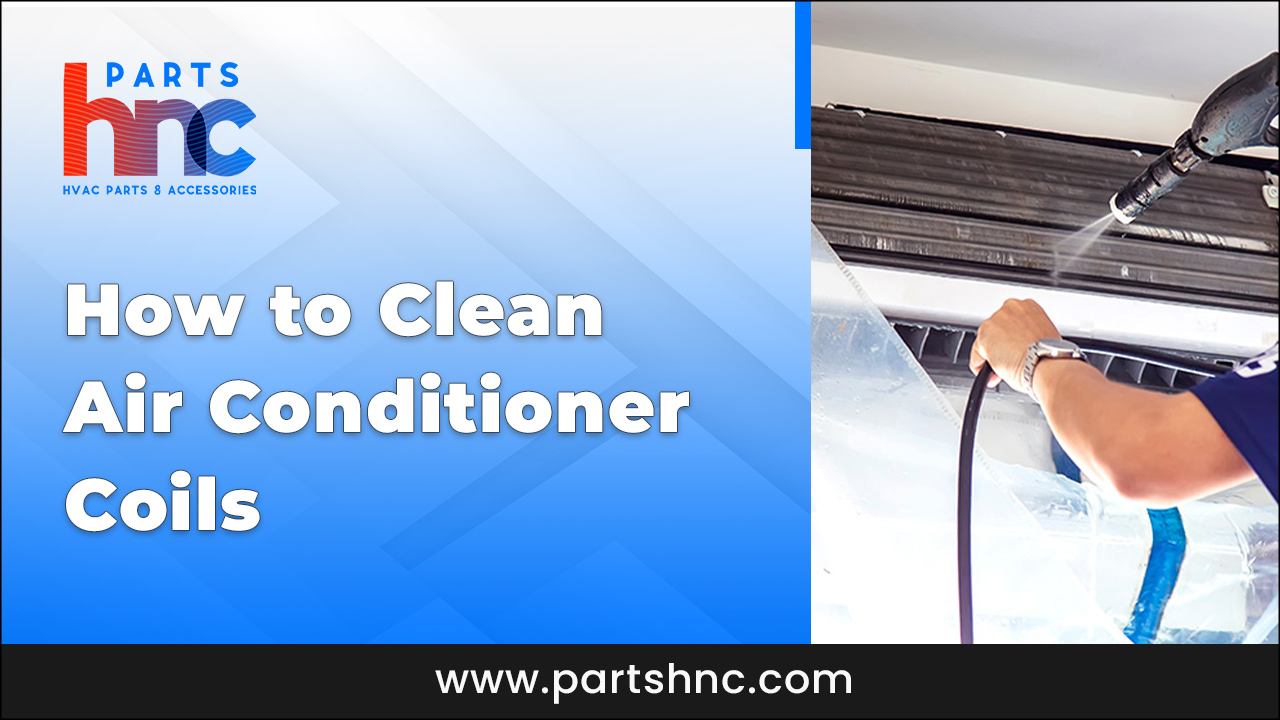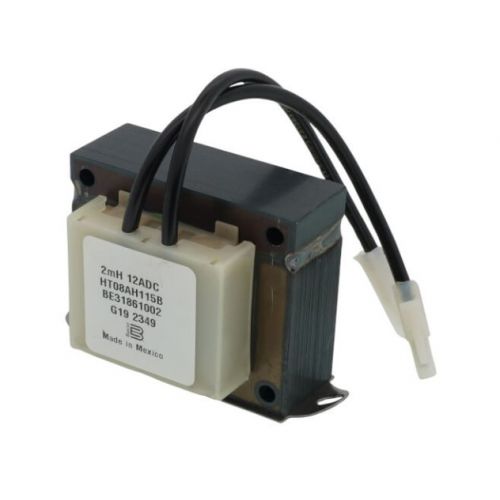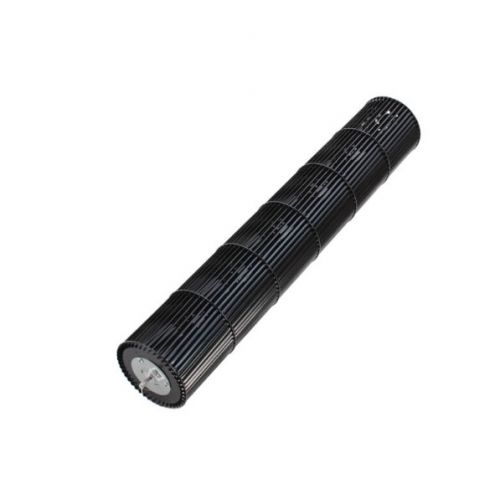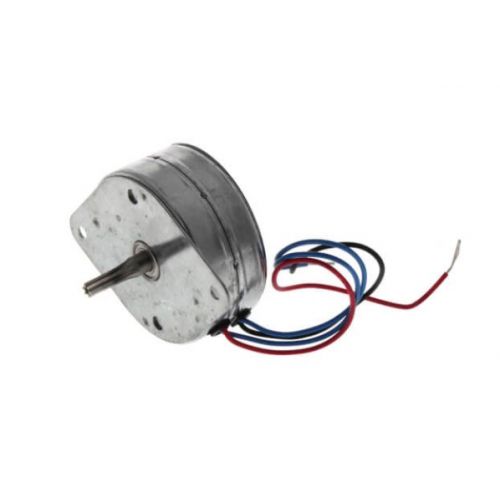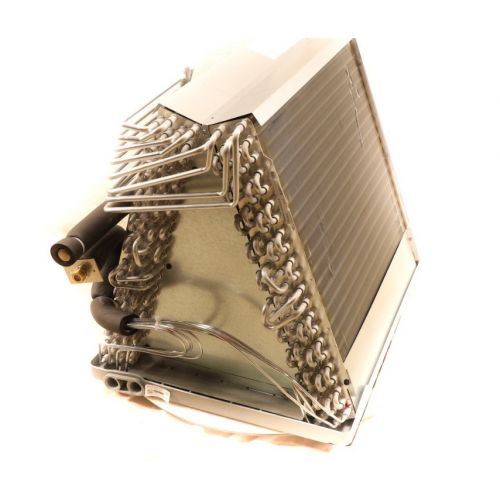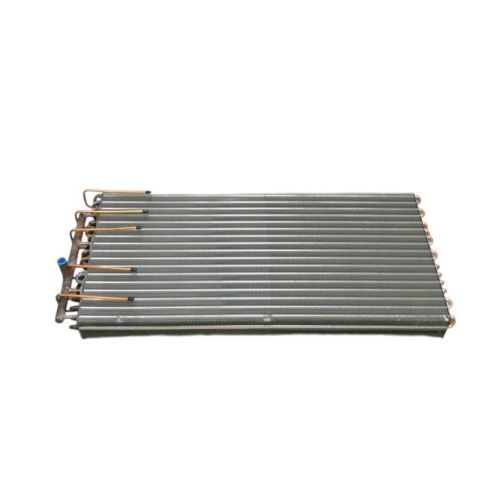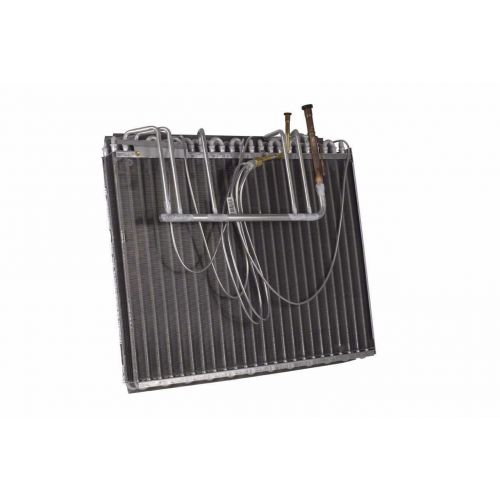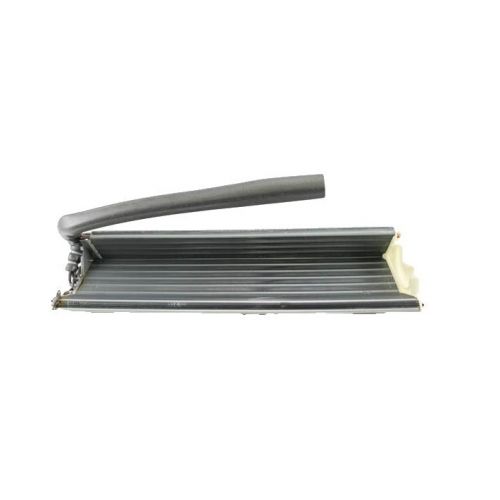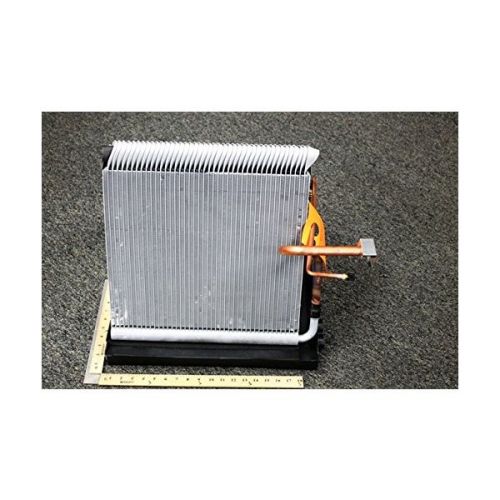How to Clean Air Conditioner Coils
Are you struggling to keep your home cool despite running your air conditioner constantly? Have you ever wondered why your AC isn't performing as efficiently as it used to? The answer may lie in cleaning air conditioner coils. Regular maintenance is crucial for achieving optimal performance from your AC unit, and one of the essential tasks is cleaning the coils. In this article, we will explore the importance of maintaining clean coils on air conditioner, and how dirty coils can impact cooling efficiency. We also find out the potential cost savings and extended lifespan that can be achieved by keeping your coils clean.
Table of Contents
- Understanding the Air Conditioner Coils
- Signs of Dirty Air Conditioner Coils and When to Clean Them
- Why It's Important to Clean Air Conditioner Coils?
- What Tools and Materials Do I Need to Clean the Coils Effectively?
- How to Clean AC Condenser Coils from Outside?
- How to Clean AC Evaporator Coils Inside House?
- When to Call a Professional?
- Conclusion
- FAQs
Understanding the Air Conditioner Coils
Air conditioners rely on two sets of coils to provide cool air: evaporator coils and condenser coils. Each set of coil for air conditioning unit serves a different purpose in the cooling process. It is important to keep both sets of coils clean for optimal performance.
Before we dive in cleaning HVAC coils, let us find out what they are.
What Is an Evaporator Coil?
AC evaporator coil is located indoors, typically near the air handler. Its main job is to cool the air that will be blown throughout the entire house. The evaporator coils, which are constructed of metal tubes running through aluminum fins, are first exposed to blower air, which then passes through them. The refrigerant liquid cools the coils as it enters them by expanding into a gas. The chilly AC evaporator coil then transfers this coolness to the incoming air, resulting in a cozy interior.
What Is a Condenser Coil?
AC condenser coil is located outdoors in the condenser unit. Its primary function is to dissipate the heat removed from the indoor air. Similar to evaporator coils, condenser coils are made of metal tubes that pass through aluminum fins. The refrigerant, which is initially compressed into a gas, condenses into a hot liquid inside the coils. The heat is released and dissipated through the fins as the liquid moves through the AC condenser coil. The condenser unit's electric fan on top helps with the process of dissipating heat.
PartsHnC is your ultimate destination for all your HVAC needs! From evaporator coils to condenser coils, we have it all in one place. Also, discover a wide range of HVAC parts such as blower motors, circuit boards, expansion valves, compressors etc from top-selling manufacturers at competitive prices.
Signs of Dirty Air Conditioner Coils and When to Clean Them
Before we find out the best way to clean ac coils let us look at some signs that your coil for air conditioning unit may be dirty:
- Reduced Cooling Efficiency: A reduction in cooling efficiency is among the most prevalent indications that the coils are dirty. It may be because dirty coils are impeding the heat transfer process if you notice that your air conditioner is no longer cooling the same amount as it used to.
- Lengthier Cooling Cycles: If your air conditioner's coils are dirty, it may take longer for it to cool your home to the right temperature. You might have restricted airflow as a result of dirty coils if you notice that your cooling cycles are taking longer.
- Low Airflow: Your air conditioning vents' reduced airflow is another sign that your coils are dirty. It may be because dirty coils are preventing proper air circulation if you notice weaker or uneven airflow throughout your home.
- Ice Formation: Dirty coils interfere with the heat exchange process, which causes ice to form on the AC evaporator coil. If you see ice buildup on the indoor unit of your air conditioner, it's probably time to clean the ac coils.
- Increased Energy Consumption: The energy efficiency of your air conditioner can be significantly impacted by dirty coils. The system may use more energy to make up for its difficulty in maintaining ideal cooling. It's worth checking your coils if you notice a sudden rise in your energy costs without any other obvious causes.
Why It's Important to Clean Air Conditioner Coils?
Cleaning AC coils is not only essential for its proper functioning but also offers several benefits such as improved cooling efficiency, minimized wear on the system, reduced service calls, and cost savings. However, it's important to keep safety considerations in mind while undertaking this task.
- Improving Cooling Efficiency: When the coils of your air conditioner become dirty, the condenser fan and compressors have to work harder to produce the same amount of cool air for your home. By cleaning air conditioner coils, you restore them to their original state, allowing them to work at their intended capacity and improving the overall cooling efficiency of your system.
- Keeping the System from Wearing Out: To keep the system at the desired temperature, dirty coils require more frequent system cycling. The condenser unit's fan may deteriorate more quickly because of the continuous work it does to remove hot air from your home. Cleaning air conditioner coils reduces wear and increases system longevity.
- Reducing Service Calls: The likelihood that HVAC technicians will be called for service increases with the complexity of the repairs. These service calls can be pricey; the technician's visit alone, excluding additional labor and materials, typically costs between $100 and $200. You can cut down on frequent service calls and possibly save a sizable sum of money over time by keeping the coils on your air conditioner clean.
- Saving Money : Since air conditioners use a lot of electricity, their energy costs are high. You can lower your energy costs by reducing the frequency and length of time your air conditioner runs by performing routine coil maintenance. Regular maintenance and cleaning of the AC coils may also help avoid the need to buy a new AC, which can be an expensive investment starting at about $3,000 to $4,000.
Safety Considerations
It's important to consider safety precautions when cleaning air conditioner coils. HVAC coil cleaner can be hazardous, so it's recommended to use safety glasses, a face shield, chemical-resistant gloves, and chemical-resistant clothing during the cleaning process. Most air conditioner units are located outdoors and should have adequate ventilation for working with HVAC coil cleaner. Additionally, air conditioner condensers are highly charged 240V systems, so it's crucial to ensure that the electricity is completely disabled before working on the condenser to avoid any electrical accidents.
What Tools and Materials Do I Need to Clean the Coils Effectively?
Before we find out the process for to clean coils on air conditioner, let us look at the equipments/materials needed to clean the coils efficiently:
- Cordless drill
- Screwdriver
- Fin repair comb
- Nylon scrub brush
- Bucket
- Gloves
- Shop vacuum
- Vacuum extension wand
- Water spray bottle
- Flashlight
- Garden hose
- Sprayer
- 2 Cans foaming A/C condenser coil cleaner
Know more about How to clean an Air conditioner by yourself.
How to Clean AC Condenser Coils from Outside?
Follow the below steps for cleaning ac coils outside:
- Locate the A/C Condenser Unit: Before you start cleaning condenser coils, find the condenser unit outdoors. Typically, you can locate it on the opposite side of the wall from the electric service panel.
- Disconnect the Electric Breaker: Turn off the electrical switch that regulates the air conditioner. The condenser unit is typically connected to this breaker by an electrical whip that is housed in a small metal box (cord). You may need to pull the breaker straight out or depress a big lever to turn off the system, depending on the type of breaker. The AC condenser unit may occasionally be managed by a double circuit breaker in the home's electrical service panel.
- Remove Top and Side Condenser Covers: To remove the screws holding the top protective cover on, use a cordless drill or screwdriver. The screws are bagged and set aside. Repetition is required for the side covers or safety grilles.
- Condenser Fan Assembly: Unscrew the screws with a cordless drill or screwdriver to remove the condenser fan assembly if necessary. The screws are placed in bags and left aside. Depending on the unit, you might be able to unplug the wiring harness from the unit's wiring, while with other units you might need to set the assembly up on a step stool or ladder. Examination of the AC unit's interior Spend a brief moment looking over the component inside the cabinet for any obvious issues like exposed wires, broken or cracked pipes, or advanced corrosion. If repairs are necessary, call a service professional.
- Remove Large Debris: Lift out any large debris that has accumulated at the bottom of the metal cabinet while wearing gloves. Put the trash in a bucket, and put the biodegradable items in the compost bin at your house.
- Clean With a Shop Vacuum: Use a shop vacuum to clean up any leftover debris from the bottom of the A/C cabinet by connecting the extension wand to it.
- Fix the Fins: Use a metal-tipped fin comb to straighten out any small areas of crushed fins on the heat exchanger. To return the fins to their original shape, insert the comb's tines into them and raise and lower the tool.
- Cleaning the Protective Grille: Take out any substantial debris that may have become wedged between the protective grille and the aluminum fins on the outside of the air conditioner. By hand, remove any debris and leaves.
- Spray the Foam Coil Cleaner: Apply a thick coating of foaming A/C condenser coil cleaner on all four sides of the cabinet. Ensure the HVAC coil cleaner penetrates and passes through the fins but avoids touching them.
- Check the Fins With a Light: Holding a powerful torch or shop light inside the air conditioner cabinet, check the fins for light sources from the outside. You can evaluate how clean the fins are using this.
- Spray Water From Inside Out: After letting the coil cleaner sit for 5 to 10 minutes, use a garden hose and sprayer attachment to spray water from the inside out. Work your way down from the top, finishing one side before moving on to the next.
- Spray Water Outside: Hose down the outside of the cabinet from top to bottom to flush out any debris that has been forced out of the fins, cabinet, and grille. Avoid aiming water inward because doing so could force debris into the fins and coils.
- Reassembling the Unit: Until the condenser unit is completely dry, leave the power off and the door open. Replace the fan, side covers or grilles, and top after it has been removed, if necessary. Finally, restart the system.
- Keep the Unit Clean: Cut back any shedding trees or plants that are close to or above the A/C unit. With the bungee cords provided, attach a mesh leaf guard to the top of the A/C cabinet to keep leaves out.
How to Clean AC Evaporator Coils Inside House?
Cleaning your AC evaporator coils is an important maintenance task that helps ensure optimal performance and efficiency of your air conditioning system. Here's a step-by-step guide on how to clean coils inside ac unit:
- Find the AC Evaporator Coils: The AC evaporator coils are usually inside the house and connected to the furnace, air handler, or fan coil. Remove the panel or tiny door that covers the evaporator coils using a screwdriver. If you're having trouble locating them, refer to the user manual for your air conditioner or conduct an online search for guidance.
- Examine the contaminated coils: Check for accumulation of dirt and debris on the evaporator coils. The coils are enclosed in a structure that resembles a tent, and this is typically where the dirtiest buildup is located. By hand, get rid of any substantial trash, such as twigs or leaves. As they will need to be straightened later, keep track of any crooked fins on the coils.
- Brush Away Debris: Gently sweep dirt and debris from the evaporator coils using a soft brush. When cleaning heavily soiled areas, use more force, but take care not to damage the coils by using a brush with hard bristles.
- Fix Any Bent Fins: You can use a fin comb or brush to gently reshape any bent fins you find during the inspection. To prevent further harm, move slowly and carefully as you run the comb or brush parallel to the fins.
- Spray with a Cleaning Solution: After most of the debris has been removed, generously coat the coils and fins with a suitable coil cleaning solution. Observe the directions included with the cleaning agent. To give the solution time to break down more substantial buildup, let it sit for five to ten minutes. Then use a soft brush or cloth to clean the coils. Reapply the solution and carry out the cleaning procedure again for any stubborn areas.
- Mist with Water: Spray some clear water onto the evaporator coils using a spray bottle. Avoid flooding the coils with too much water as this can harm the indoor unit. To ensure complete rinsing, you might need to mist the coils several times.
- Reassemble the Unit: Before reassembling the indoor unit, give the coils and unit ample time to dry completely. Replace the door or panel that shields the evaporator coils. Turn on the power and AC system once everything is in place.
These are some of the best ways to clean AC coils. Know more about the Installation cost of an AC.
When to Call a Professional?
Knowing when to call a professional is crucial for certain tasks. HVAC service technicians should be contacted to repair extensively damaged fins that cannot be fixed with a fin comb. Additionally, if you feel uncomfortable cleaning the air conditioner coils, it's advisable to let technicians handle it, as it is part of regular maintenance.
Conclusion
Regular cleaning of air conditioner coils is crucial for maintaining optimal performance and efficiency. DIY cleaning can be done using the above simple steps, but professional assistance should be sought if the coils are severely dirty or damaged. By ensuring clean coils, one can enjoy the benefits of a smoothly running air conditioner and improved indoor air quality.
FAQs
Can you clean ac coils yourself?
Yes, you can clean AC coils yourself using a soft brush and a coil cleaner. Ensure the power is off and follow safety precautions to avoid damage.
Why is it important to clean air conditioner coils regularly?
It is important to clean air conditioner coils regularly to maintain optimal cooling performance, improve energy efficiency, and prevent potential issues such as reduced airflow, system breakdowns, and increased electricity consumption.
How often should I clean my air conditioner coils?
The frequency of cleaning air conditioner coils depends on factors like usage, location, and surrounding environment. However, it is generally recommended to clean the coils at least once a year to ensure proper functioning of the AC system.
How can I prevent dirt buildup on the coils in the future?
To prevent dirt buildup on air conditioner coils in the future, you can regularly clean or replace air filters, keep the surrounding area clean and free from debris, and schedule routine maintenance checks by a professional HVAC technician.
How long to wait before turning on AC after cleaning coils?
After cleaning the AC coils, it is advisable to wait at least 24 hours before turning on the air conditioner. This allows sufficient time for the coils to dry completely and ensures safe operation of the system.
Is vinegar good for cleaning AC coils?
Vinegar can be a good natural cleaning agent for AC coils. It can help remove dirt and grime from the coils, but it may not be as effective as specialized HVAC coil cleaner. If using vinegar, it is important to dilute it properly and rinse the coils thoroughly to avoid any potential lingering odor or residue.


